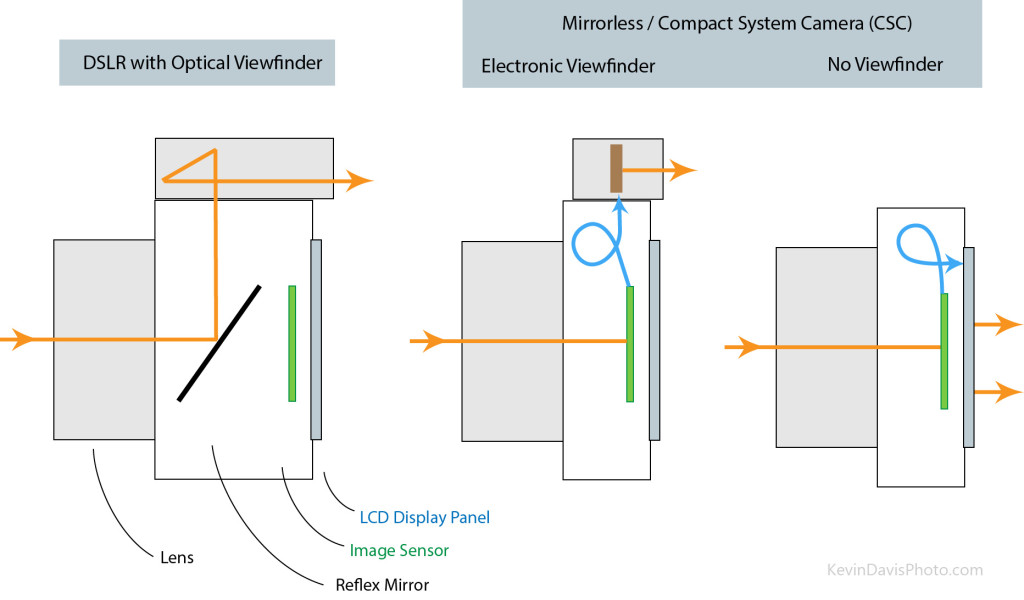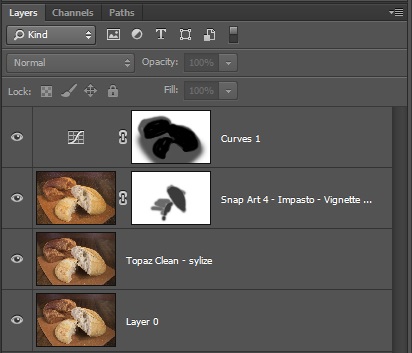
Let’s clear the air. Is the DSLR dead? And what exactly is a DSLR anyway?
Ten years ago, most people assumed that DSLR meant “really good camera”. (Some folks still believe this.) Over the past three years, numerous commentators have pronounced that mirrorless cameras have killed the DSLR. Both these sentiments are a mix of truth and falsehood.
First of all, DSLR means Digital + SLR. It is the digital successor to SLR film cameras. If we all agree that we’re talking about digital cameras, then the “D” is superfluous.
SLR (DSLR) = single lens + reflex mirror.
These cameras have two distinguishing characteristics. “SL” means single lens. “R” means reflex mirror. An SLR allows the photographer to optically see through the exact same lens that the camera uses to capture images; it does this using a mirror to redirect the light. In general, the mirror must be moved out of the light path when capturing an image; that’s why it is called reflex. (There are some exceptions; E.g. Canon EOS RT, circa.1990.)
System camera = camera with interchangeable components.
The most common system feature is choice of interchangeable lenses. Second most common system feature is a “hot shoe” for external strobes and other accessories. While interchangeable lenses implies “system”, the reverse is not entirely true; some camera systems do not include interchangeable lenses. Some camera systems offer lens accessories to make the built-in lens more telephoto or more wide-angle; for example: Olympus C5060 (2003), Fuji X100 (2015).
Compact system camera.
A system camera that is smaller than a typical DSLR. As mirrorless cameras are commonly half the size of a typical DSLR, mirrorless + system camera is often referred to as a Compact System Camera.
Mirrorless camera.
Mirrorless cameras eliminate the mirror found in SLR designs. There are two practical implications: the camera is smaller than comparable SLR and it lacks an optical viewfinder.
The term mirrorless camera generally implies a digital camera; however, I must point out that many older film-based cameras do not have a reflex mirror. View camera, twin lens, and rangefinder are all examples of mirrorless camera designs.
Eye-level viewfinder.
To see through the camera, you place the camera near your eye. There are three types of eye-level viewfinder. (1) Optical viewfinder, typical of a DSLR / SLR; (2) rangefinder (or possibly a twin-lens camera) which employs a second lens, separate from the lens used by the camera to capture the image; (3) electronic viewfinder which displays the image using a tiny digital display within the viewfinder. The first two are “optical” and require no electrical power, while an electronic viewfinder relies upon electronics.
Alternatively, a large display panel can substitute for an eye-level viewfinder. For example, a camera phone does not include an eye-level finder. But if you’ve ever struggled to use such a camera in bright sunlight, you may appreciate that an eye-level viewfinder can have advantages. Additionally, optical viewfinders do not eat your battery as digital display panels do.
EVIL = electronic viewfinder + interchangeable lenses.
Electronic viewfinder implies mirrorless. Typically, the combination of EV+IL implies a mirrorless camera system, which in turn implies compact system camera. However, as mentioned previously, a system camera may not have interchangable lenses. The term EVIL is more specific.
TTL = Through The Lens
This refers to an electronic exposure meter built in to the camera. A TTL meter measures the light coming through the lens used to capture the image. TTL is common for many different types of cameras, including SLR and mirrorless.
Let me give you one specific example where TTL is important. If you place a dark polarizing filter on the lens, the light entering the lens is diminished. TTL metering is immediately and precisely aware of this. If the meter is not measuring the light through the lens, then you have to manually adjust the camera controls to compensate.
Is the SLR “dead” ?
No, not yet.
As we said earlier, some people have equated SLR with “really good camera”. In that respect, the venerable SLR no longer stands alone.
Recognizing the technical meaning of the SLR acronym, mirrorless designs eliminate mechanical moving parts inside the camera. That is a compelling feature. And mirrorless designs tend to be much smaller, which is also compelling in many circumstances. However, the concept of an optical viewfinder + single lens … is still amazing, stunning, cool, and practical.
Honestly, I choose and use both SLR camera systems and mirrorless camera systems. They each have strengths and weaknesses. Did you know that “compact” isn’t always a good thing? But that is a subject for another day.
















